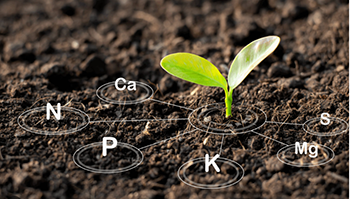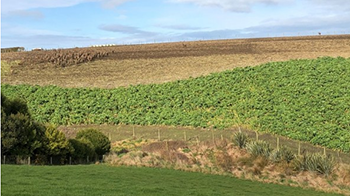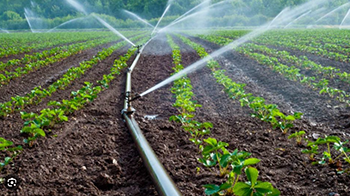Here, you'll find a guide that describes these primary sector-wide practices and how they might apply to your farm.
Websites:
There are 21 industry-agreed Good Management Practices (GMPs) that focus on improving water quality, specifically targeting nitrogen, phosphorus, sediment, and faecal contaminants. They were developed collaboratively with farmer-driven input from Dairy NZ, Deer Industry New Zealand, NZ Pork, B+LNZ, Horticulture NZ, and the Foundation for Arable Research, along with support from central and local government. The GMPs are designed to be practical and achievable.
By working together, these primary sector groups agreed that adopting GMPs is not only efficient, it also reduces business risks and environmental impact.
"It's not just the right thing to do; it's also smart business". (DINZ Environmental Code of Practice 2018)
The Industry-agreed Good Management Practices Booklet(external link) (2015) was updated in 2018 to become the Good Farming Practice - Action Plan for Water Quality 2018 and can be downloaded here(external link). The structure of Good Farming Practice (GFPs) is reflected in this guide.
NOTE: The terms GMPs and GFPs are used interchangeably by industries and mean the same thing.
Each primary sector has further developed industry-specific guidance to help you understand and effectively implement these GMPs, along with examples of the necessary records to maintain. This information is available on their websites. Simply search "Good Management Practices" or "Code of Practice" from the homepage to access details on various farming activities, including winter grazing, managing Critical Source Areas (CSAs), and erosion-prone land.
The Deer, Pork, and Dairy sectors have also created their own guiding documents based on GMPs, providing tailored information. You can find links to these documents and websites in the Useful Links tab at the top of this page.
Tasman District Council recognises and supports these Good Farming Practices (GFPs), and acknowledges the many practices and initiatives farmers and growers are already doing to improve land management and freshwater health.
These GFPs align with industry standards and provide a solid foundation for Freshwater Farm Plans (FWFPs), outlining environmental practices that will help protect Tasman's land and freshwater resources.
While these GFPs set minimum standards for farmers and growers across New Zealand, some catchments may require individual farmers to go beyond these, especially where there are freshwater or ecosystem health challenges. In Tasman, two such areas are the Waimea Plains and the WAMARA, where farmers may need to meet higher standards.
Many of the industry-developed guidance and subsequent Industry-led Farm Environment Plans (FEPs) are based on these GFPs. For example:
DairyNZ have based its Good Farming Practices for Environmental Management(external link) guidance document. These GFPs are reflected in the Tiaki plan developed by the dairy partner Fonterra.
Horticulture’s industry assurance programme, the NZGAP - Environmental Management System(external link), meets these GFP principles, which have been translated further to more industry-specific GFPs.
The Deer Industry's Environmental Management (Code of Practice 2018)(external link) is based on these GFPs, which give additional consideration and mitigation options that account for the behaviour of deer.
If you're part of an industry assurance program, you’re likely already working towards, meeting, and demonstrating these GFPs.
This guide outlines effective practices across the primary sector by grouping all 21 industry-agreed GMPs into six key management areas.
|
1. General Principles - Farm Planning & Recording - |
4. Land & Soil |
|
2. Nutrients |
5. Effluent & Wastewater |
|
3. Waterways & Critical Source Areas |
6. Water & Irrigation |
Each management area is divided into practices. Examples from various sectors illustrate how each practice can be implemented, including any industry-specific requirements. These examples are taken from sector-specific guides that outline what good environmental management looks like and highlight key focus areas. There are also examples of information you can use to demonstrate their achievement. Links to these industry-specific guides are provided under ‘Useful Links’ at the top of the page.
IMPORTANT: You don't need to use every example listed to demonstrate a practice. You might be surprised at how many you're already following, and you may come up with even more.
 General Principles - Farm Planning and Recording
General Principles - Farm Planning and Recording Good Farming Practices help you understand and manage the environmental risks of your farming activities. These General Principles guide you in assessing risks, managing them, and tracking your progress, forming a solid foundation for your FWFP.
Find out more about the General Principles, including farm planning and records.
 Nutrients
NutrientsNutrients on farms come from sources like effluent, fertiliser, N fixation, supplementary feed, and irrigation. Knowing the source and losses of nutrients from the farming system helps you to balance them to match plant and animal needs and minimise losses. This ensures the best response, maximises return on investment, and reduces the risk of nutrient loss to water.
Find out more about Good Nutrient Management Practices
 Waterways and Critical Source Areas
Waterways and Critical Source AreasKeeping stock out of waterways ensures stock stay safe and waterways stay healthy. Sediment, faecal bacteria, and phosphorous can also enter waterways through overland flow, particularly from Critical Source Areas (CSAs) such as stock camps, tracks, and grazing practices. CSA management is all about planning and preparation to ensure these areas are protected at the time of highest risk.
Find out more about Good Farming Practices around Waterways and Critical Source Areas
 Land and Soil
Land and Soil Land and soils are the fundamentals of a productive farm. Losing your nutrient-rich topsoil into waterways is an expensive loss from your farm in terms of replacement nutrient costs. It is also damaging to waterways, causing discolouration, smothering aquatic habitat, and undesirable plant and algal growth due to added nutrients, particularly phosphorus attached to sediment. Good cultivation and grazing practices will minimise these losses by maintaining soil structure and quality.
Find out more about Good Land and Soil Management Practices
Good effluent management is a combination of a well-designed effluent system and having processes in place to ensure it is applied to pasture correctly. The overall objective is to minimise the risk of contaminants entering water bodies, from stored and applied Farm Dairy Effluent
Find out more about Good Effluent and Wastewater Management Practices.
 Water and Irrigation
Water and IrrigationA well-designed irrigation system is easier to manage, is efficient, and more reliable. This allows you to better match water application to match soil type and conditions and meet plant production needs. Excessive drainage and runoff will take valuable nutrients with it, with these nutrients having the potential to contaminate ground- and/or surface water.
Find out about Good Water and Irrigation Management Practices.